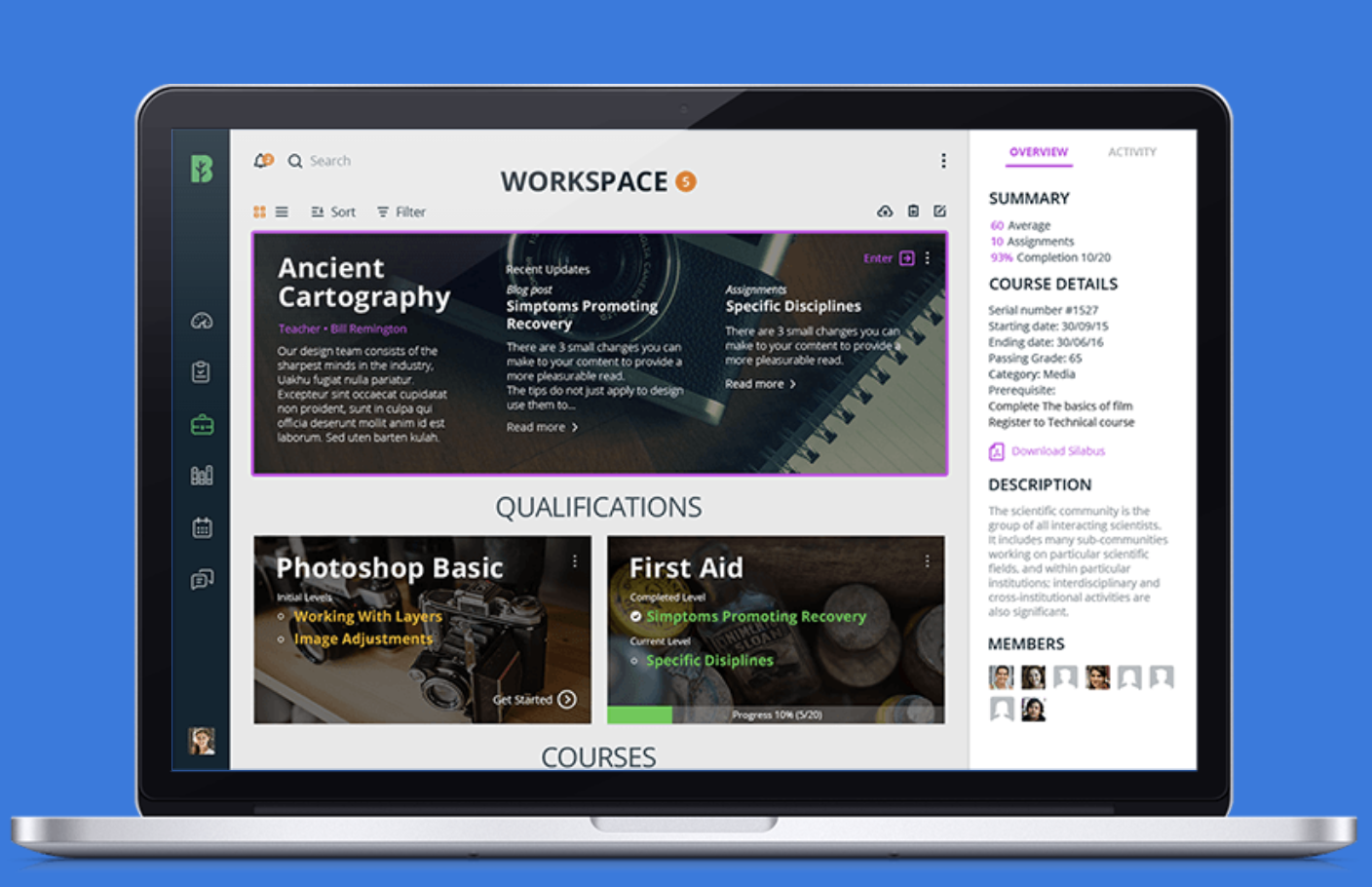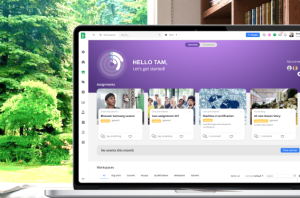Learn ten techniques you can use to ensure your organization stays compliant with industry-specific regulations and operates within legal and ethical boundaries.
Compliance training is not just a regulatory requirement; it’s a crucial component for building trust among employees, stakeholders, and customers. Effective compliance training goes beyond a tick-box exercise. It engages employees, instills a sense of ethical responsibility, and ensures a seamless alignment with legal and regulatory frameworks.
From maintaining data privacy to workplace health and safety, compliance training creates a workplace culture of accountability, ethical conduct, and risk awareness.
This blog post will explore the core elements of effective compliance training for your employees. Learn ten techniques you can use to ensure your organization stays compliant with industry-specific regulations and operates within legal and ethical boundaries.
The risks of non-compliance
Various industries are subject to compliance regulations to ensure ethical practices, consumer protection, and the well-being of its employees, clients, and society.
For example, the finance and banking sectors are heavily regulated to ensure stability and protect consumers. Banks must comply with regulations like the Dodd-Frank Act in the US, the Goods and Services Tax (GST) in India, and the Financial Services and Markets Act 2000 (FSMA) in the UK. These rules and regulations aim to prevent financial crises and protect consumers from unlawful financial practices.
Healthcare and pharmaceuticals also have laws and legislation that mandate the secure handling of patient’s sensitive health information to protect privacy and ensure the quality and safety of drugs. Breaking the rules of the General Data Protection Regulation (GDPR) happens when an employee mistakenly sends an email with personal data, like a customer spreadsheet, to someone outside the company. This breaks trust and confidentiality principles.
But what are the risks of non-compliance for these businesses and others?
Firstly, the costs of non-compliance are not solely financial. As well as organizations facing hefty monetary penalties, there is also a significant risk to a business’s reputation.
Let’s take a look at British Airways (BA). The global airline was fined £1.8m and £92k costs after an employee was crushed by a tug vehicle at Heathrow Airport.According to the Health and Safety Executive (HSE), BA failed to ensure the safety of its employees. Issues relating to employee training and supervision contributed to unsafe working practices.
“The situation in the baggage hall at Heathrow Terminal 5 was an incident waiting to happen.”
– Megan Carr, HSE Inspector
Secondly, regulatory actions, such as fines or closures, can disrupt normal business operations. Corrective efforts to address compliance issues may require significant time and resources, diverting attention from core business activities.
Finally, non-compliance with employment laws can have a tangible impact on employee satisfaction. Legal actions can damage the company’s internal culture and prevent top talent from applying for vacant roles. Considering that 69% of employees believe the workplace is one of the essential sources of community, trust is the foundation for building great relationships and collaboration.
As you can see, successful compliance training reduces risk and enhances a business’s reputation. Create a workplace environment that prioritizes integrity, safety, and responsible business practices by aligning employees with legal and ethical standards.
Here are ten techniques to leverage for effective employee compliance training.
1. Customize content
Picture this.
Your organization offers a series of blended learning modules covering various non-compliance topics, such as health and safety and food hygiene. Your entire workforce is emailed with the details and joining instructions for each course.
Considering these sessions are only relevant to a specific department, some employees find applying the generic content directly to their role challenging and even impossible. While these modules may provide general knowledge, they might not address the learners’ particular needs, challenges, or job-specific nuances. Customize learning by aligning content with the specific responsibilities and challenges of the individuals. This means learning content considers the learners’ preferences, interests, and skill levels. In turn, personalization increases interest, motivation, and engagement. Employees are more likely to invest time and effort in learning materials directly applicable to their professional development. In fact, 77% of L&D professionals believe personalized learning is vital for employee engagement.

Make sure your L&D efforts are reaching the right employees at the right time. Tailor programs to address specific skill gaps within your organization. By identifying and targeting these gaps, customized learning ensures that employees receive the training they need to excel in their roles–contributing to organizational success.
2. Provide engaging learning materials
L&D programs that lack interactive elements to engage participants are dull and unstimulating. Relying heavily on monotonous lectures or static presentations without opportunities for discussions or hands-on exercises can leave employees feeling uninterested and organizations not meeting learning objectives.
Employ a mix of compliance learning resources such as podcasts, simulations, and case studies. Why not use a scenario-based simulation where employees must navigate compliance challenges in a virtual workplace?
Maintain learner interest and provide engaging compliance training learning materials. It enhances the learning experience and contributes to higher levels of employee satisfaction and motivation.
3. Keep abreast of legislation
A Learning Experience Platform (LXP), like Blossom, can be a valuable tool to stay updated with new legislation. LXPs can store and organize relevant training materials using a central repository of learning materials, including information about new legislation. This is particularly useful for businesses with remote and hybrid workforces as relevant content is accessible from one central location–regardless of where employees work.
In addition, as compliance regulations change over time, LXPs make it simple to access and distribute legislation updates with ease.
Maintain successful employee compliance training and ensure L&D materials are regularly updated to reflect the latest legal requirements and company policies. For example, if there’s a change in data protection laws, L&D pros can promptly update the training content to reflect these modifications, ensuring employees access the latest information.
Take it from Orit Barkama, L&D Manager at SodaStream, who says, “With Blossom (LXP), we’re now 100% compliant, both internally and from a legal perspective. Blossom has enabled our learning management team to achieve time and labor cost savings and reduce the time our employees spend on learning.”
4. Use real-life scenarios
Videos, interactive modules, and case studies help keep employees engaged. When learners can translate their learning experiences into real-life scenarios, they are more likely to retain what they learn.
Maintain effective compliance training for your employees and Increase knowledge, understanding, and application of compliance principles by offering:
- Scenarios that mirror real-life situations. Allow employees to reflect and analyze real cases, discuss potential solutions, and apply relevant concepts from the training.
- Role-playing activities. Provide simulated real work situations among colleagues. Allow employees to practice and apply newly acquired skills in a controlled environment. Why not develop scenarios related to discrimination in the workplace? Learners can role-play scenarios involving potential discriminatory behavior; others can practice addressing and preventing such behavior.
- Interactive workshops. Group discussions create a democratic learning environment, allowing participants to gain diverse perspectives and learn from each other. Organize workshops and group discussions where employees can share their experiences related to the training topic.
5. Offer immersive training opportunities
Did you know that learning through experiences can increase knowledge retention by as much as 75%? As we’ve seen, engagement is crucial for knowledge retention, as it helps learners stay focused and motivated.
Seeing, hearing, and interacting with virtual objects has much more impact than a simple slide presentation or video. This application of knowledge helps reinforce learning and ensures a deeper understanding of the material. Interactive elements, such as quizzes or games, provide immediate feedback, strengthening correct answers and addressing misunderstandings.
Plus, immersive learning activities accommodate employee learning styles and preferences; some are visual learners, while others prefer auditory or kinesthetic learning. Interactive learning activities like visual aids, group discussions, hands-on tasks, and multimedia elements cater to different learning styles. This inclusivity makes it more likely that a broader range of learners will find the compliance training content accessible and engaging.
Interactive learning is not only about using technology but involves creating opportunities for learners to actively participate, work together, and apply what they’ve learned–offering a more effective and enjoyable learning experience.
6. Maintain clear communication
Good communication builds strong teamwork, boosts morale, and ensures everyone is on the same page, leading to a more positive and efficient L&D strategy. That said, poor communication affects trust for 45% of workers. In addition, 63% of employees felt poor communication gets in the way of their job and is a reason to quit.
Maintain effective compliance training for your workers by creating learning content that is clear and transparent. Explain what employees will learn as a result of attending the training. Avoid jargon that may be confusing to employees who are not familiar with legal or compliance terminology.
Let’s put that into practice and say you have introduced a new policy related to using company email and the importance of protecting customer data.
The compliance training communicates the scope of the policy, outlining what constitutes sensitive information and the specific rules regarding its transmission via email. However, the compliance training fails to include information about obtaining consent or opt-out procedures. This means employees may unintentionally breach regulations by not seeking proper authorization–damaging your company’s reputation.
Using this example, clear communication in compliance training ensures workers fully grasp the policy’s details, implications, and the proper procedures to follow. Without clear communication, unintentional non-compliance increases–potentially exposing the organization to legal and reputational consequences.
7. Leverage LMS technology
“Safety training for employees was a mess,” says Doron Batsir, 365 Implementer IT Department at Plasson Ltd. “Every department managed it differently, with different information held on employees, and nobody knew who had completed what or could keep track of the progress of each employee.”
Sound familiar? Technological solutions, such as learning management systems (LMSs) and learning experience platforms (LXPs), help reduce the risk of regulatory violations and promote a safer and more ethical work environment using:
- Automated notifications and reminders. Send messages and reminders to employees about upcoming compliance training deadlines. Automatic reminders help employees and departmental managers stay on track with compliance training requirements, reducing the risk of non-compliance due to oversight.
- Data analytics and reporting features. Demonstrate compliance with regulatory authorities. Make use of comprehensive analytical tools to track and analyze training data. Generate reports on completion rates, assessment scores, and other relevant metrics.
- Integrating with other tech stacks. Integrate compliance training systems with HR databases to ensure accurate tracking of employee training records. Streamlines record-keeping processes and ensures that HR systems are up-to-date with employees’ compliance training status.
But don’t take our word for it.
Since Plasson must comply with stringent health and safety requirements, Doron Batsir says, “Before Blossom, it was very complicated and time-consuming tracking and managing training for our teams, as well as onboarding new employees. This problem has been alleviated with Blossom. It has saved time for managers now with a much faster and more efficient system.”
Leverage technology and provide practical regulatory training for your employees.
8. Optimize assessment and feedback processes
L&D monitoring and assessment allow trainers and organizations to measure the effectiveness of compliance training for employees
Assessments provide quantifiable data on the knowledge and skills gained by every employee. With a solid compliance training assessment process, it’s easier to work out whether the training objectives are met. In addition, evaluation and feedback processes help identify knowledge gaps. This ensures that L&D resources are perfectly aligned to meet strategic goals, and trainers can identify aspects of training that need improvement. This feedback loop ensures that future training programs can be refined and enhanced for better outcomes.
Specific sectors, such as the oil and gas industry, involve hazardous processes and have strict safety regulations. Evidence of training is crucial to ensure that employees understand safety protocols, emergency procedures, and environmental regulations.
Solid training assessments provide the evidence to ensure industry regulations and standards compliance. They help organizations demonstrate their commitment to meeting legal and regulatory requirements.
Top tip: Why not include quizzes or assessments at the end of each compliance module to evaluate employees’ understanding? Provide constructive feedback to reinforce learning and have robust evidence that evidence completed regulatory training.
9. Integrate with job roles
We’ve highlighted the importance of ensuring compliance training has a direct relevance to an employee’s daily tasks. For example, a finance team might have specific modules on financial compliance, while the HR team focuses on workplace ethics.
Maintain successful compliance training for employees by integrating L&D programs that support and evaluate the understanding of compliance related to their jobs.
Let’s say a canteen assistant needs to complete a food hygiene course. By integrating learning directly with their everyday tasks, such as including practical activities about temperature controls, learning about the importance of proper food storage temperatures is reinforced.
Practical activities engage employees actively and provide opportunities to reinforce fundamental food hygiene principles. Integrate compliance training for employees by incorporating hands-on experiences.
10. Promote a culture of compliance
Help employees understand the importance of complying with legislation, regulations, and ethical standards.
Positive reinforcement strengthens the idea that your organization values and recognizes compliance. Implement incentives that motivate employees to complete compliance training on time and with high levels of understanding.
Recognize and reward employees who consistently demonstrate a commitment to compliance. This could include shout-outs across your team communication channel, an acknowledgment in team meetings, or even through an LMS formal recognition program.
Create a learning culture where compliance is not just a set of rules but a critical function of how your organization operates.
Maintain effective compliance training for your employees
Build confidence and competencies across your workforce. Help employees navigate complex compliance issues easily. Empower your people with the latest knowledge and skills to perform their roles effectively.
By following the ten techniques listed here, you can successfully adapt to changing regulations and deliver an effective compliance program for your organization.
Streamline your compliance training efforts with Blossom. Our LXP specialists will walk you through our platform and discuss your organizational compliance needs. Book a demo today.








